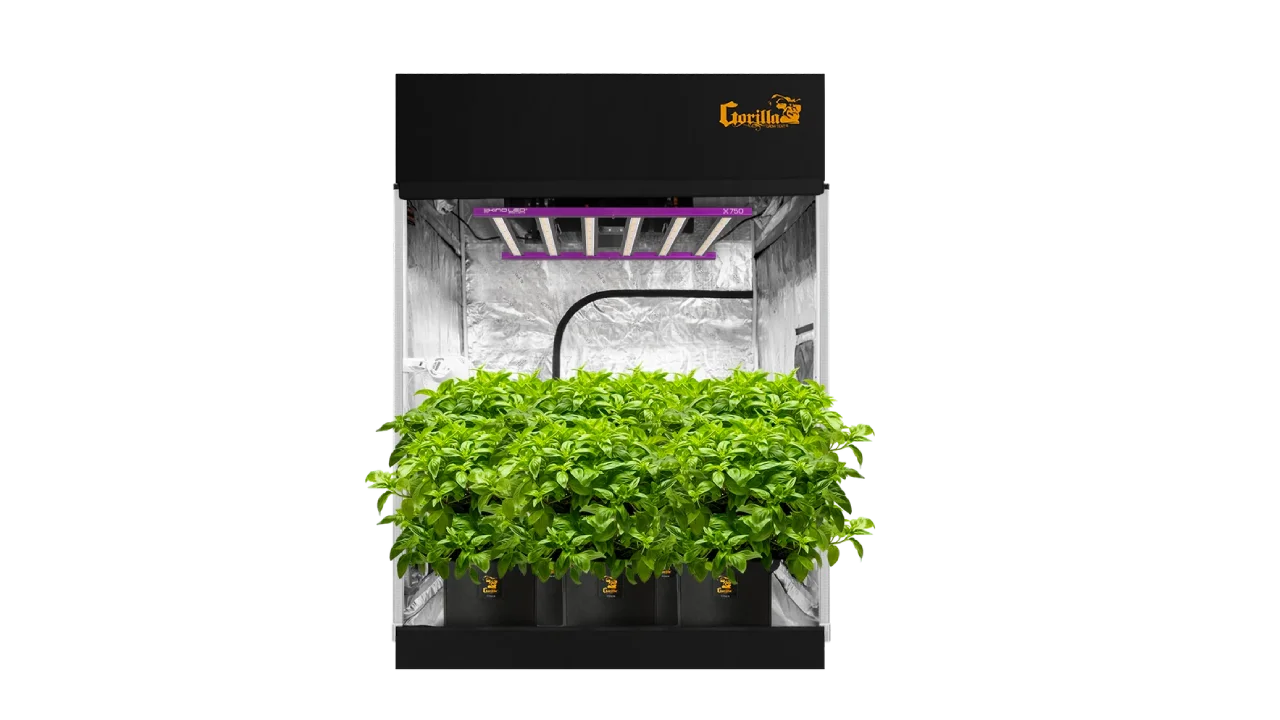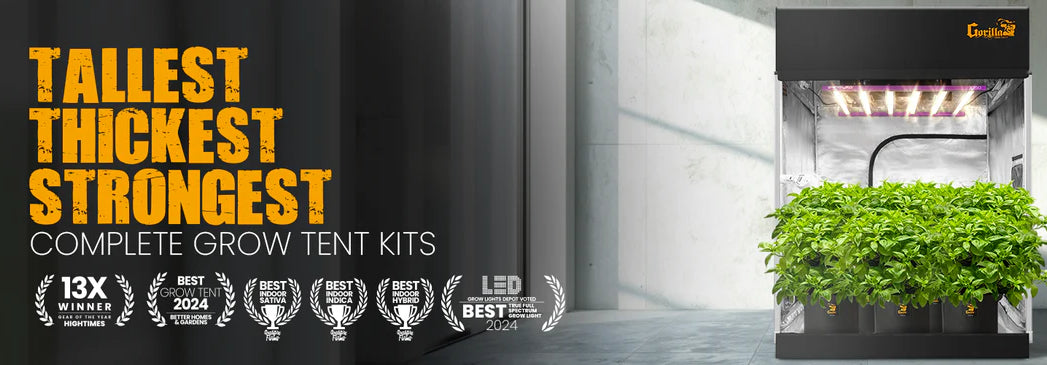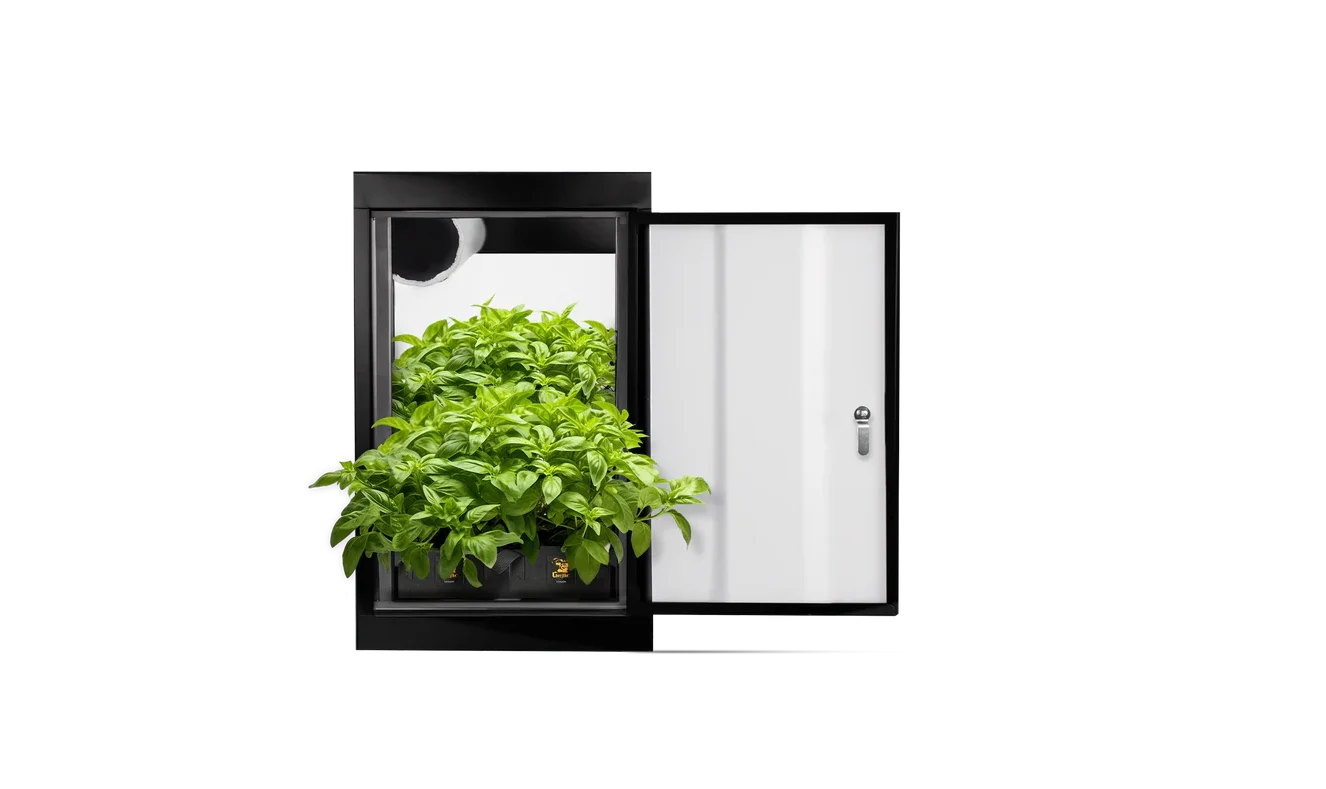
How to Optimize Indoor Growing Conditions
Why Optimizing Indoor Growing Conditions Is Important
Indoor growing allows you to control the environment to ensure that your plants get everything they need to thrive. However, simply setting up an indoor grow room isn’t enough—optimizing the growing conditions is key to promoting healthy growth, maximizing yields, and improving the overall quality of your plants. Whether you're growing vegetables, herbs, or flowering plants, this guide will help you learn how to optimize indoor growing conditions for the best possible results.
Step 1: Control Lighting for Optimal Growth
Light is one of the most important factors in indoor growing. Plants rely on light for photosynthesis, and the type, intensity, and duration of light will significantly affect their growth.
1. Use Full Spectrum LED Grow Lights
Full spectrum LED grow lights mimic natural sunlight, providing the right wavelengths for plants at every stage of growth. This is particularly important for indoor plants, which need both blue light for vegetative growth and red light for flowering.
- Vegetative Stage: During the vegetative stage, plants need around 16-18 hours of light per day to promote leaf and stem growth.
- Flowering Stage: Reduce the light to 12 hours per day during the flowering stage to encourage blooming and fruiting.
2. Position Your Lights Correctly
Improper light positioning can cause plants to become leggy (if too far away) or burned (if too close). Make sure to adjust the height of your lights based on the plant's growth stage. Seedlings require lights to be closer, while mature plants need the lights raised to avoid burning.
Step 2: Maintain Proper Temperature and Humidity Levels
Temperature and humidity are crucial for maintaining plant health. Most indoor plants thrive in temperatures between 70°F and 85°F (21°C to 29°C), but it’s essential to adjust conditions based on the plant’s growth stage.
1. Temperature Control
- Vegetative Stage: During the vegetative stage, plants prefer temperatures between 70°F and 85°F (21°C to 29°C).
- Flowering Stage: For flowering, reduce the temperature slightly to 65°F-80°F (18°C-27°C) to prevent heat stress and enhance flowering.
2. Humidity Control
Maintaining the right humidity level is also essential for plant growth. High humidity can lead to mold or mildew, while low humidity can cause plants to become dry and stressed.
- Vegetative Stage: Plants require higher humidity during the vegetative stage (around 60-70%) to promote growth and prevent moisture loss.
- Flowering Stage: During the flowering stage, lower the humidity to 40-50% to reduce the risk of mold and mildew on buds and flowers.
3. Use Hygrometers and Thermometers
Monitor the temperature and humidity in your grow room with a hygrometer and thermometer. These tools help you make real-time adjustments, ensuring that your plants are growing in the best possible conditions.
Step 3: Ensure Proper Air Circulation
Good air circulation helps regulate temperature and humidity levels while also providing your plants with the CO2 they need for photosynthesis. Stagnant air can lead to mold, mildew, and pest infestations.
1. Install Ventilation Systems
Install an inline fan with a carbon filter to remove stale air and bring in fresh air. Proper ventilation helps maintain temperature, reduces humidity, and prevents odors from building up.
2. Use Oscillating Fans
Place oscillating fans around your grow room to keep the air moving. This helps prevent the growth of mold and mildew and strengthens your plants by simulating natural wind, which encourages stronger stems.
Step 4: Optimize Watering and Feeding
Watering and feeding your plants the right way is crucial for ensuring optimal growth. Overwatering or underwatering can stress your plants, while improper nutrient feeding can lead to deficiencies or nutrient burn.
1. Water Consistently
Water your plants based on their specific needs, ensuring the soil or growing medium stays consistently moist but not waterlogged. Overwatering can lead to root rot, while underwatering can cause the leaves to wilt and yellow.
2. Choose the Right Nutrients
Plants need different nutrients during different stages of growth. Nitrogen is essential for the vegetative stage, while phosphorus and potassium are key during the flowering stage. Use plant-specific nutrients to optimize growth and avoid deficiencies.
3. Monitor pH Levels
Check the pH of your water and growing medium regularly. Plants absorb nutrients most effectively when the pH is within the ideal range (typically 6.0-7.0 for soil). Adjust the pH as needed to ensure your plants can absorb the nutrients they need.
Step 5: Use the Right Grow Medium
The grow medium you choose will affect water retention, nutrient delivery, and root development. Choose the right medium based on your plants’ needs and your preferred growing method.
1. Soil
Soil is a traditional growing medium that’s easy to use and provides natural nutrients. It’s ideal for beginners and offers good water retention and root support.
2. Coco Coir
Coco coir is a soil-less medium made from coconut husks. It retains water well and provides excellent aeration, making it a popular choice for indoor growers looking for an alternative to soil.
3. Hydroponics
Hydroponic systems grow plants directly in water with added nutrients. This method allows for faster growth but requires more attention to nutrient levels and pH.
Step 6: Prune and Train Plants for Maximum Yield
Pruning and training your plants helps improve airflow, maximize light exposure, and encourage higher yields.
1. Prune Dead or Yellowing Leaves
Regularly remove any dead or yellowing leaves to improve airflow and direct the plant’s energy toward healthy growth. This also reduces the risk of mold and pests.
2. Train Plants with Topping or LST
Use training techniques like topping or low-stress training (LST) to control the shape of your plants. Topping encourages bushier growth, while LST allows you to spread out the plant’s branches, improving light exposure and yield potential.
Final Thoughts on Optimizing Indoor Growing Conditions
Optimizing your indoor growing conditions is key to achieving healthy, thriving plants with maximum yields. By carefully controlling light, temperature, humidity, airflow, and nutrients, you can create the ideal environment for your plants to flourish. With the right equipment and attention to detail, your indoor garden will reward you with robust growth and abundant harvests.
Frequently Asked Questions
- What is the best temperature for indoor growing? Most plants thrive in temperatures between 70°F and 85°F during the vegetative stage and slightly cooler temperatures during the flowering stage.
- How often should I water my indoor plants? Watering frequency depends on the plant and grow medium, but ensure that the medium stays consistently moist without becoming waterlogged.
- What type of lighting is best for indoor plants? Full spectrum LED grow lights are ideal for indoor plants, providing the right balance of blue and red light for all growth stages.


